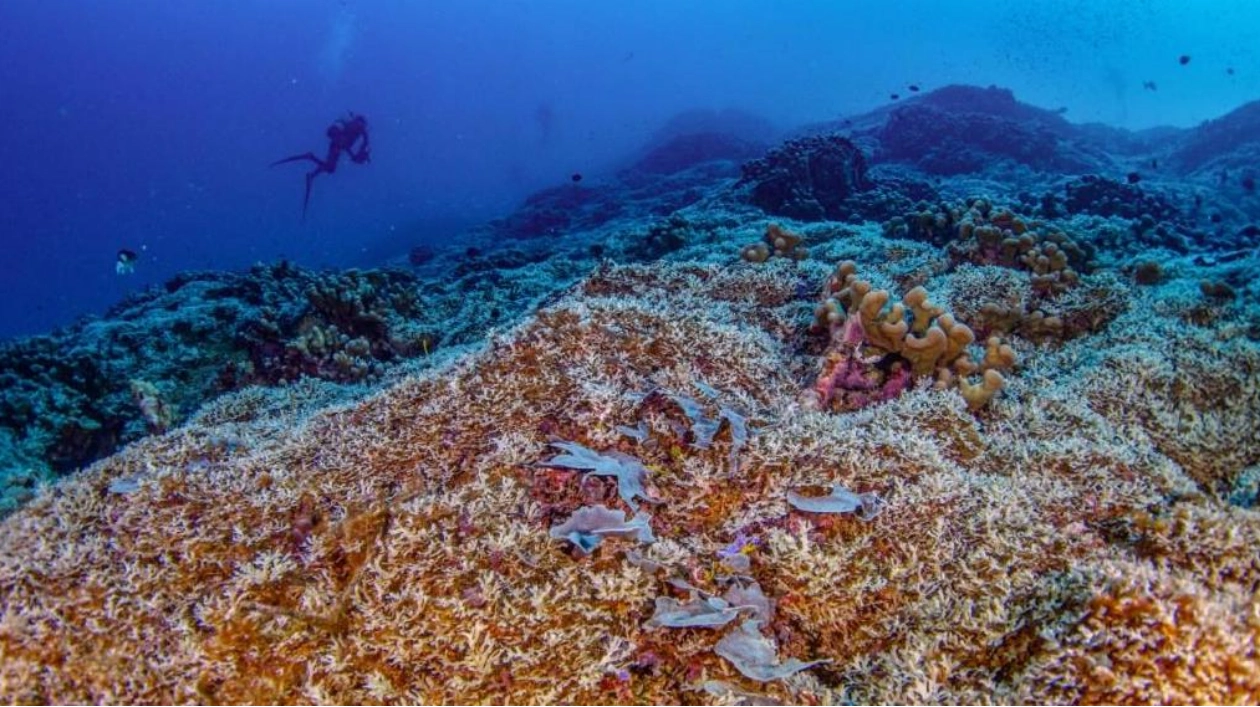Off the coast of the Solomon Islands, a centuries-old giant lurks beneath the waves, visible even from space. Discovered in October by the National Geographic Society’s Pristine Seas team, this colossal coral stands as the world’s largest standalone coral structure. Measuring approximately 34 meters wide, 32 meters long, and 6 meters tall, it surpasses the average length of a blue whale and dwarfs the next largest known coral, a 22-meter-wide specimen in American Samoa nicknamed Big Momma.
“While Big Momma resembled a massive scoop of ice cream on the reef, this newly found coral looks like the ice cream has started to melt, spreading endlessly across the seafloor,” described Molly Timmers, a marine ecologist with the Pristine Seas team, in a statement. The immense coral is a shoulder-blade coral known as Pavona clavus, characterized by scapula-like ridges. The team estimates that it was built by nearly a billion stony coral polyps, which collectively form rigid skeletons of calcium carbonate. These structures are vital habitats for numerous marine species, according to coral scientist Eric Brown of the Pristine Seas team.
“Coral reef ecosystems, which cover only about 0.2 percent of the ocean’s area, are home to over 25 percent of marine species,” he noted during a news conference. The discovery was serendipitous, as underwater cinematographer Manu San Félix stumbled upon the giant coral the night before the team was set to depart. “In that first moment, I knew I was witnessing something extraordinary,” he recalled. “I kept telling myself, ‘no, it can’t be that big,’ not wanting to get too excited before it was measured.”
After measuring the coral’s unprecedented dimensions and analyzing the species’ growth rate, the team estimated its age to be between 300 and 500 years. This longevity could be invaluable for researchers, as the coral’s skeleton records environmental data. Despite its apparent health, coral reefs worldwide face numerous threats, including ocean acidification, pollution, and coral bleaching. According to Brown, the discovery serves as a poignant reminder of the importance of protecting these “small yet mighty” environments.
Source link: https://www.sciencenews.org






